Between the late 16th and 19th centuries, the Mewad and Mughal courts in India shared artistic styles, techniques and tools between each other. The Rajputs of Rajasthan eventually formed their own styles of painting Pahari Miniatures with these pigments. These natural pigments, additives and agents were either derived from traditions in the Middle East or already used indigenously in India. However, some traditional pigments have been artists’ favourites all around the world and were used as far back as thousands of years ago in cave paintings. Let us explore these organic pigments in this List of Natural Indian Paint Pigments.
Note that some pigments on this list, in their powdered form can be dangerous if accidentally breathed. Converting them to a paste or using protective gear when painting can solve this problem. However, modern formulas that use these pigments are generally non-toxic.
Agate Stone / Sulemani Stone (For burnishing)

Apparently, the stone was discovered by the Achates River in Sicily by Theophrastus, a Greek philosopher. The use of this stone in Rajput and Mughal artworks in India probably came from Iraq where this stone was named after the old Sulemania city. This city itself is named after “Solomon.”
“Burnishing” or polishing for paintings with gold and silver embellishments is best done with an object of a smooth surface. The Agate or Sulemani stone in its finished form, works perfectly for burnishing paintings on marble or even canvas. The smooth surface does not cause abrasions and smoothens the surface to give the painting a sheen. Processes like “water gilding” and “gold leafing” are done with an Agate stone instrument.
Gum Arabic/ Babul ka gond (Binding medium)
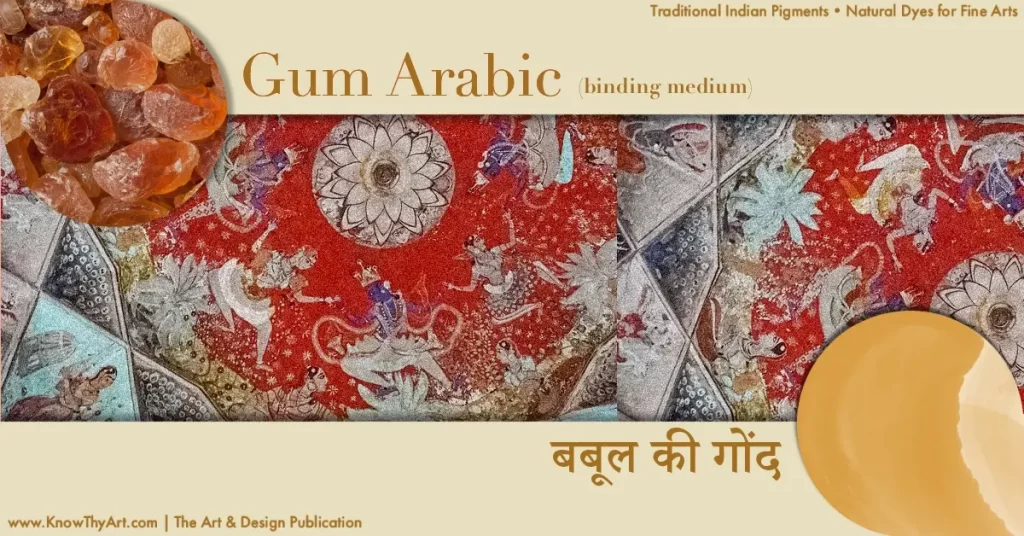
In ancient times, natural dyes and paints were made from highly pigmented rocks, plants and even bits of insects. All of these materials needed to be powdered and then mixed with a binding agent to make a paste. After this, it was used with a brush, quite like how we paint today.
Just like the pigment ingredients, even the binding agent was natural. Gum Arabic, are crystallised stones formed from the sap of the Acacia tree. These crystals could be melted and mixed with powdered pigments to use as a binding medium for paintings and murals in India.
Rasod (Used to regulate brightness)
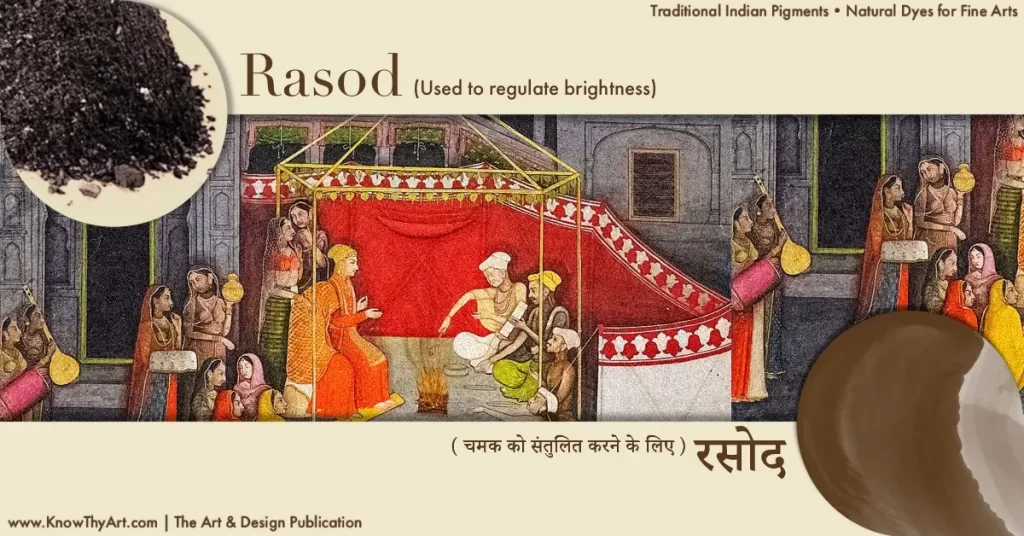
The Rasod pigment is a dark brown tone that is usually used as a water-based paint to give shadows their distinct dark hue. Rasod is extracted from the roots of the Indian barberry shrub (Berberis Arisata root) which was widely used in India and Nepal.
Rasod’s dark brown can be mixed with water to use as a varnish to darken areas of a painting. Also, a less concentrated mixture of the barberry pigment is a golden yellow that can add brightness.
Tin or Mica/ Ranga
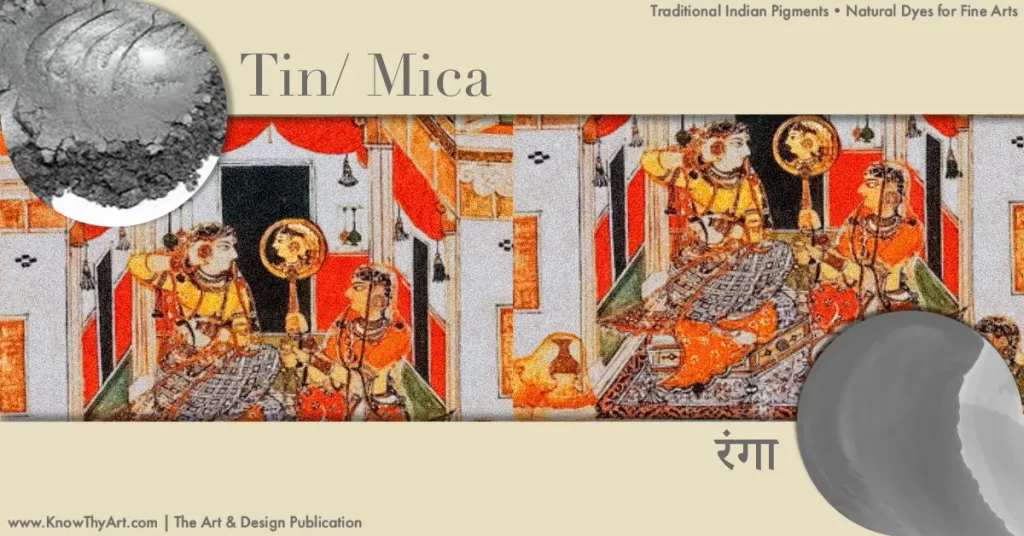
The mica pigment gives paintings a pearl sheen. The ranga pigment gets its sheen from Tin or Mica silicates that come in many colours. While these paints last for a long time on artworks, it is probably safer to use modern synthetic paints for metallic colours.
Yellow/ Peela Sang-e-Sitara Stone

This pigment has an almost “lemon yellow” shade as the powdered pigment comes from a crystal stone of the same colour. When mixed with binding agents in the correct ratio, this pigment can last decades. Museums display paintings of more than a century old with the yellow sang-e-sitara pigment is still quite intense.
Turquoise/ Firozi
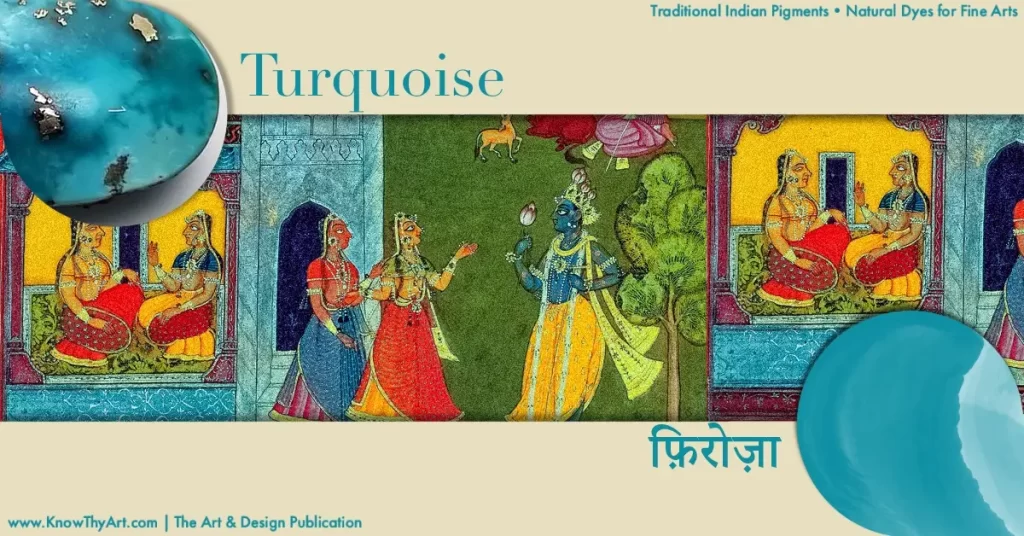
The firozi or turquoise semi-precious stone is ground to a fine powder for this pigment. Highly pigmented with deep notes, this turquoise paint has a smooth, long-lasting cover. The finish of this paint can appear glossy when mixed with an oil base.
Red Cinnabar/ Hinglu
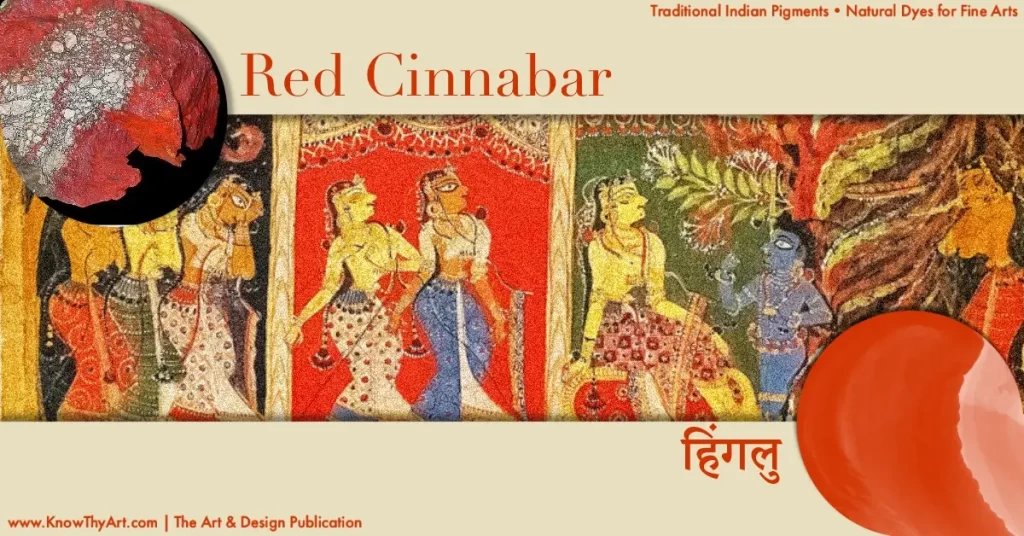
The red cinnabar stone is a type of mercury sulphide could have a wide range of shades from brick-red to maroon and scarlet. A gouache consistency of this pigment works well on canvas. When finished with a varnish, this pigment appears deeper and will also last longer.
Black Carbon/ Kala Carbon
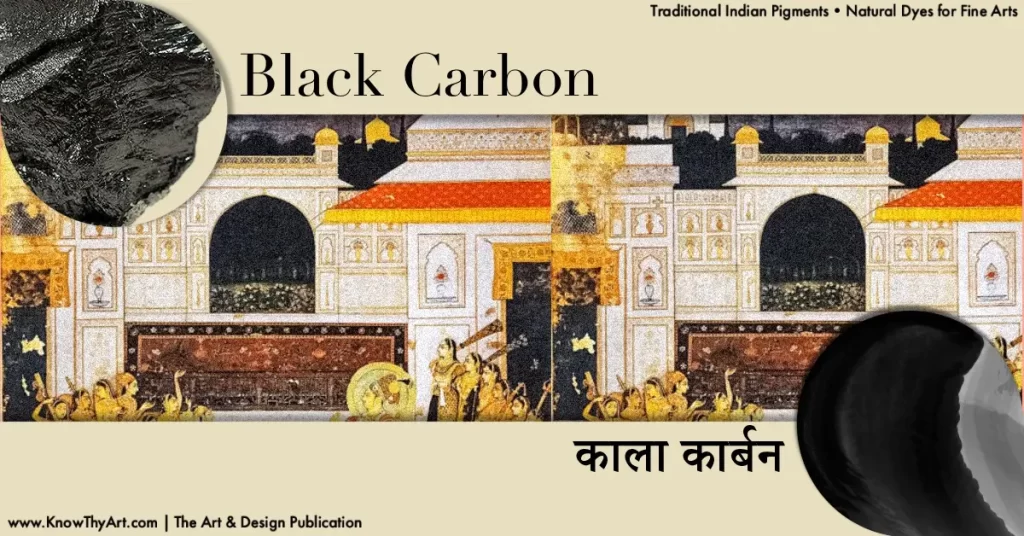
Depending on the colour of the stone, the colour of the black carbon or kala carbon pigment can range from deep black, dark grey or even dark brown. This pigment works well with other colours to regulate shades and tones. Also, in a diluted, watercolour form, it can be used to dark-wash a painting.
Green Terra Verte/ Harabhata/ Devi Hara

“Leafy green” is the best way to describe the green Terra Verte or Harabhata pigment. This stone pigment has even been famously used in old European paintings. Even though the natural stone pigment has been replaced by acrylic paints, the Terra Verte shade is still a popular favourite in standard paint-box.
Red Ochre/ Laal Geru
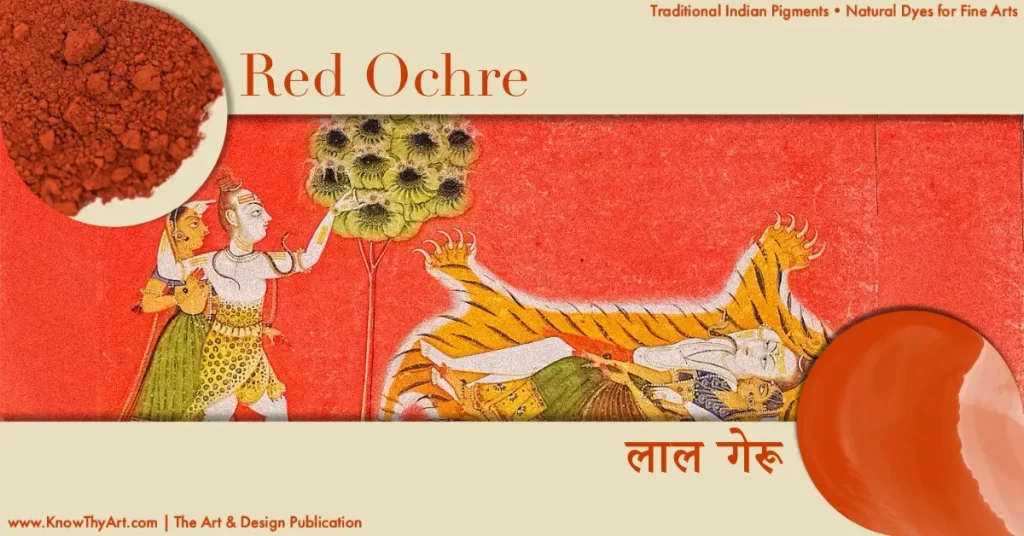
The red ochre pigment has been used for thousands of years as a colourant. Even cave paintings from thousands of years ago bear traces of red ochre. This iron oxide clay was easily available in the soil and so its discovery as use for paintings was almost inevitable. A deep orangy-red that can last ages if the painting is well maintained.
Jodhpur Yellow Stone/ Ochre/ Peela Patthar
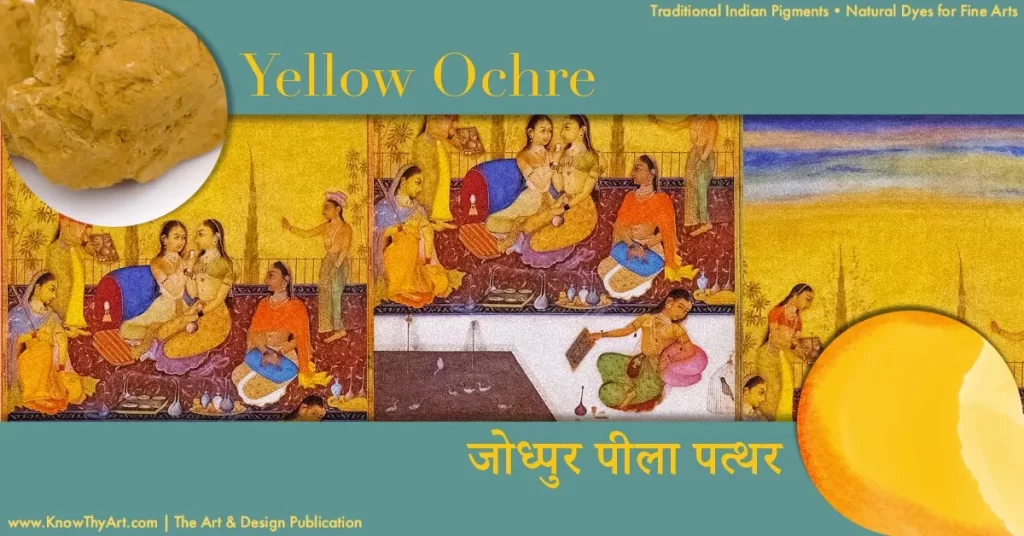
The Jodhpur yellow stone is a deep golden yellow that can be easily diluted depending on the severity of the shade required. Yellow ochre is perfect for painting the wide contrast of yellows for golden hues and is also efficient as a fabric dye. Just like its red counterpart, the yellow ochre stone is also an iron oxide clay that has been used as paint pigments for centuries.
Ultramarine Blue/ Lapis Lazuli
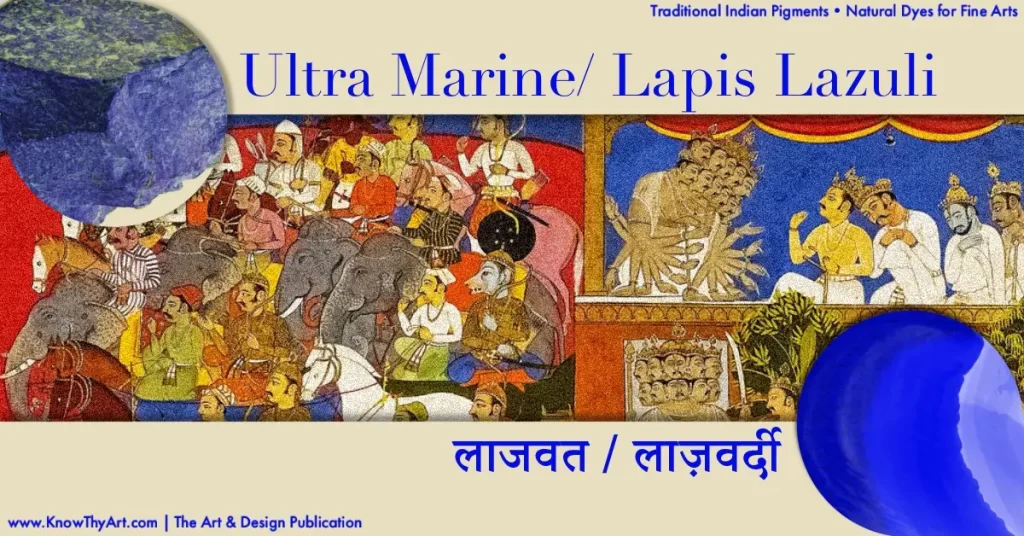
Not just in the Middle East and the Indian subcontinent, the metamorphic Lapis Lazuli stone has been coveted for centuries in Europe as well. It has been used in stone carvings, and jewellery since it is a semi-precious stone and of course as the rich ultramarine blue in paintings from the Middle Ages to the Renaissance, to Rajasthani paintings.
Gold/ Sona

Gold nuggets are beaten into a sheet of a GSM low enough to put Kleenex to shame. These extremely delicate sheets are powdered with a brush to form a fine powder. This powder can be mixed with a binding agent or in some cases even heated to melt into artwork on hard surfaces. Also, the agate burnishing tool can be used to gently place and fasten the gold sheet as it is on a marble surface for gilded elements.
Silver/ Chandi
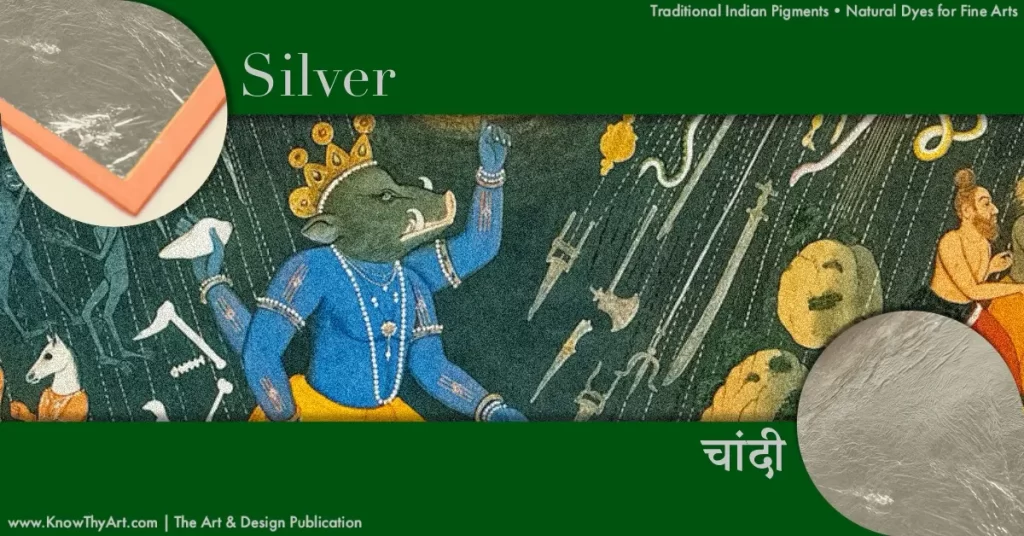
Just like its gold counterpart, silver nuggets are beaten into sheets that are lighter than air. Both, the gold and silver sheets are also used as a garnish on food and of course, as shiny, metallic paint pigments. The silver pigment is used in a similar manner as the gold. Both metal pigments need to be regularly maintained for longevity.
Vermillion/ Sindur/ Sindoor
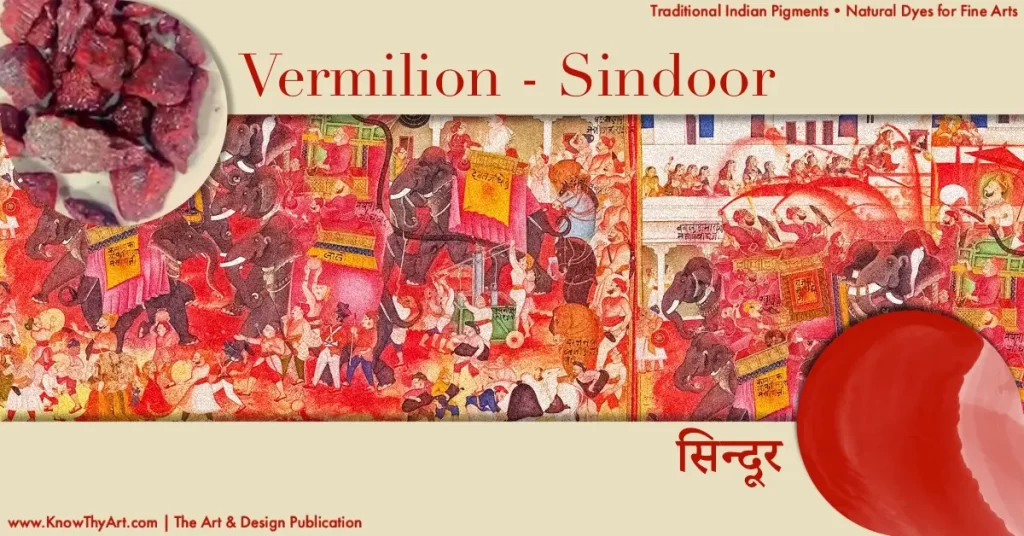
Made from red cinnabar, vermilion sindoor is made by removing the toxic mercury by treating it with alkali. The result is a highly pigmented maroon powder with a slight magenta hue. The finish of vermilion is a deep colour with an almost matte finish.
Golden Brown Tiger Eye / Bura Tiger Aakh
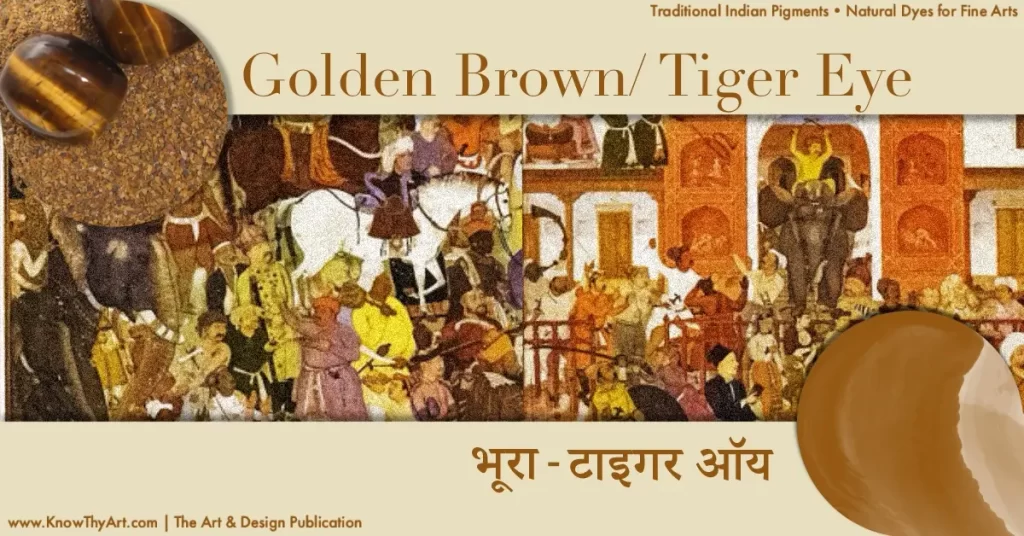
A golden brown, with a glossy sheen, is derived from this glossy, brown stone with golden yellow patterns around it. The tiger eye paint pigments work well as a base for painting certain skin tones as can be found in Mughal and Rajput paintings with subjects of royalty and people.
Red Resin/ Chandresh
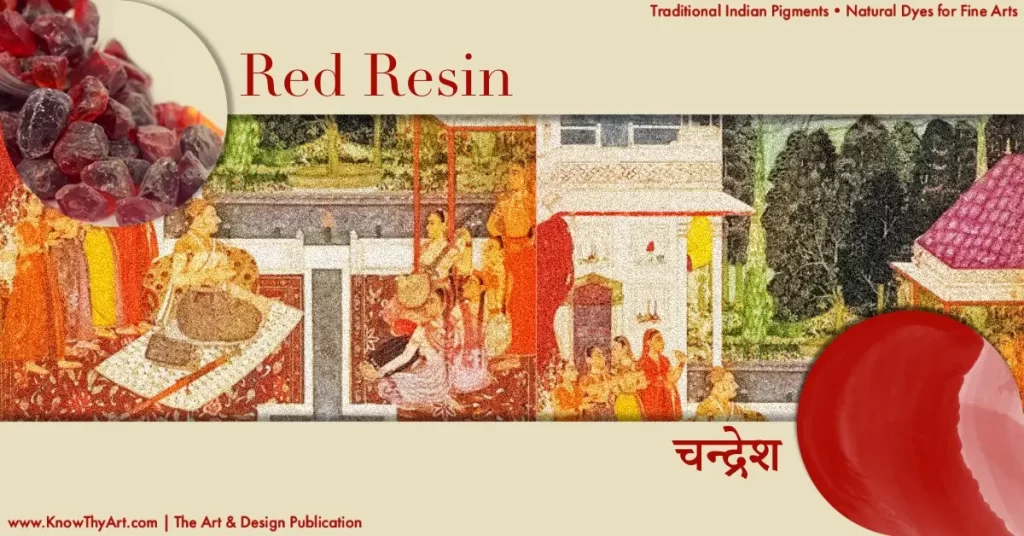
A viscous extract from tree trunks is then dried into crystals and then powdered. This pigment is thick with an almost syrupy texture, depending on the processing technique used. Some resin wax stamps for letters are made with an almost similar type of tree resin. Just like the wax stamps, the resin for pigments has the same deep red colouring.
Indigo/ Neela
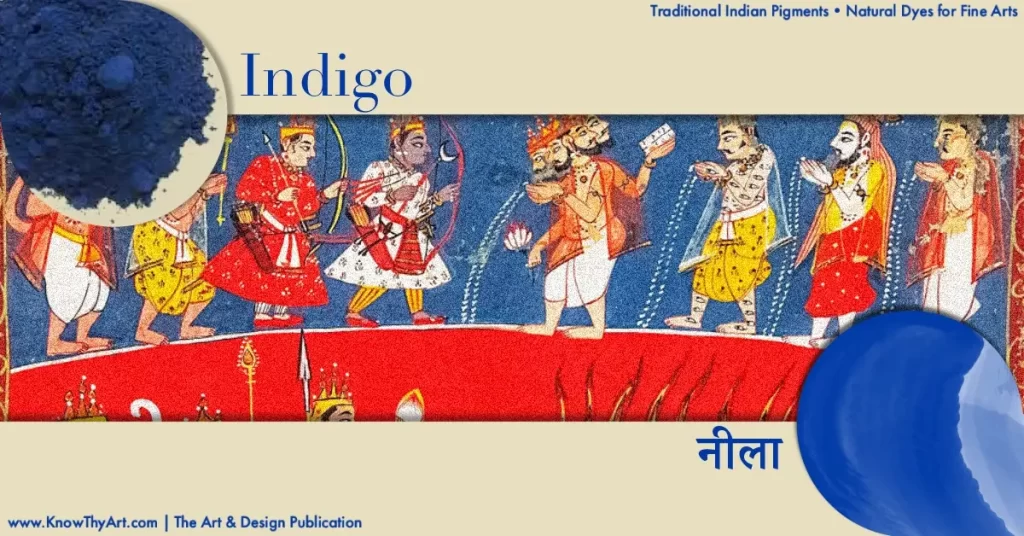
The word indigo comes from the Latin word indicum which simply means, India. Needless to say, India has been famous for exporting fabrics of this deep blue dye for centuries. Still, a go-to colour and a palette favourite for many artists, indigo is made from the Indigofera tinctoria plant. A strong blue that is quite indelible when produced well and used right.
Brown Bark Chips/ Lakadi ki Chaal
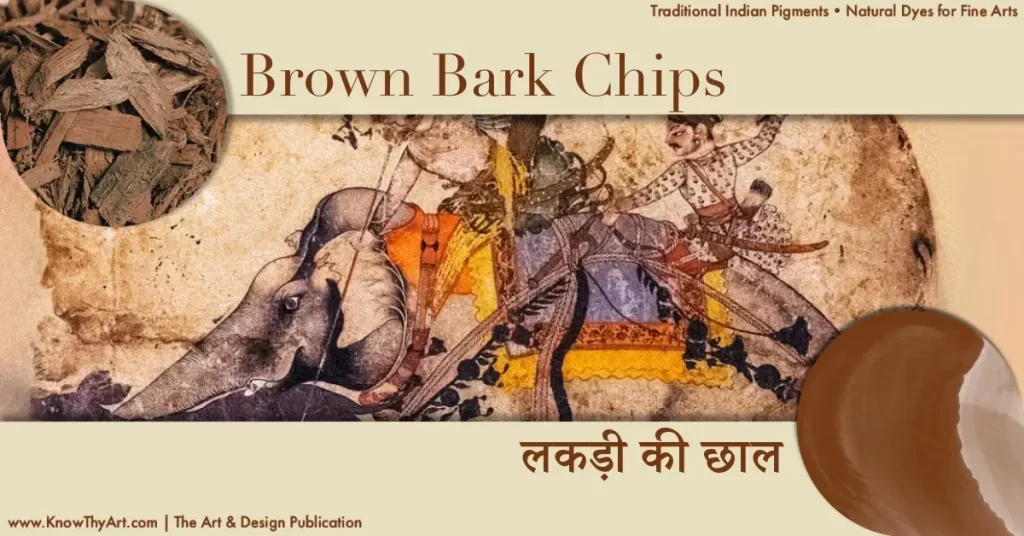
After a tedious process of pulverising and extraction, brown bark chips are turned into versatile shades of brown. Depending on the type of tree, the pigments can range from burgundy to mahogany browns. These organic bark pigments have been used traditionally in Asia and many aboriginal cultures around the world.
White Zinc Oxide/ Safeed Jasta
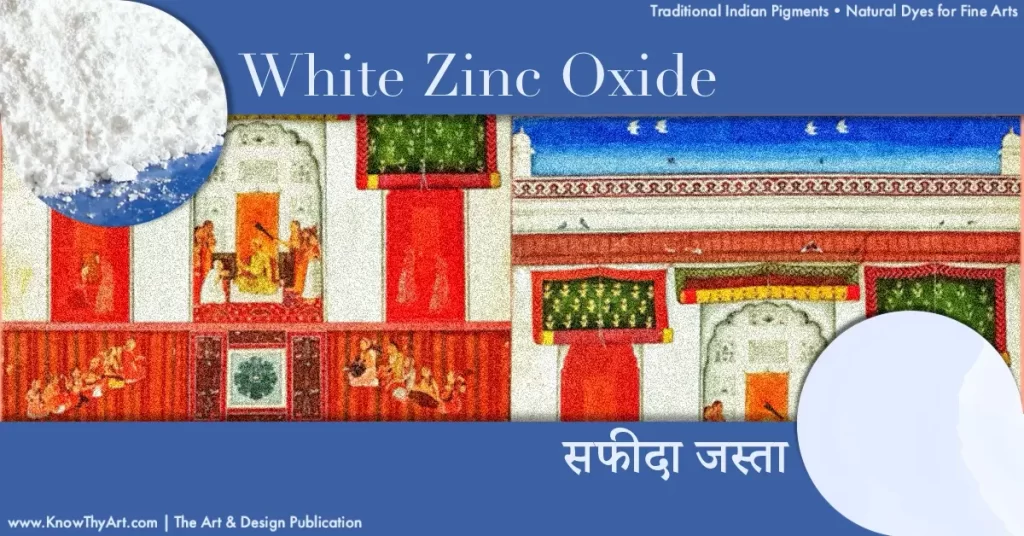
The zinc white pigment is derived from the inorganic zinc oxide. Since this pigment is insoluble in water, it works as a good additive to lighten other colours. Titanium white and zinc white are the two popular white paint pigments that most artists use. When mixed with an oil base, the cool shade of zinc white has a good “hiding power” and has therefore also been used to cover up mistakes in paintings.
Green Malachite/ Hara Malakite
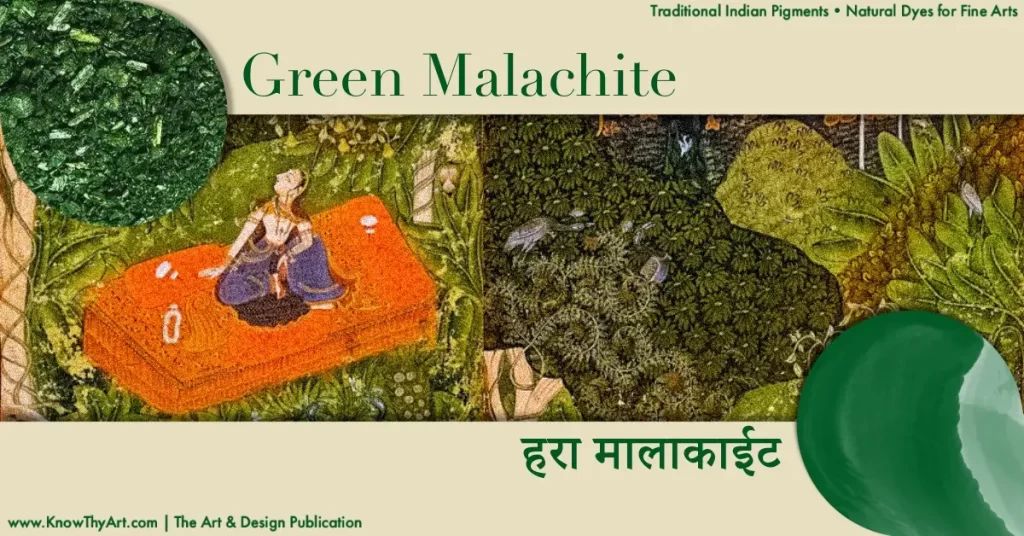
The emerald shade of green malachite has been a favourite of Indian artisans for centuries. The green crystal malachite stone is powdered to form paint pigments that have a natural sparkle. Using a flashlight on areas painted with green malachite with make it almost shimmer like the sparkle glue we used in school.
White Chalk/ Safeed Khadia
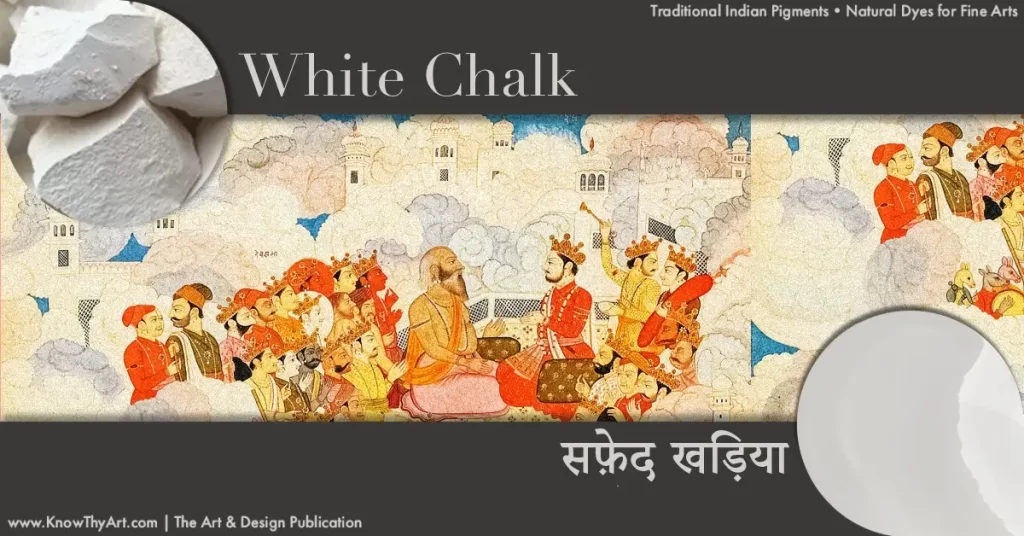
Whiting chalk can be used in different ways depending on the formula used to produce the paint pigment. The versatile white chalk stone is used to make fillers like gesso, for gouache and even as an additive to make colours a pastel shade. A jar of white chalk opaque pigment is something that every fine arts student probably has in their art bag.
Red Lac/ Laal Lakh
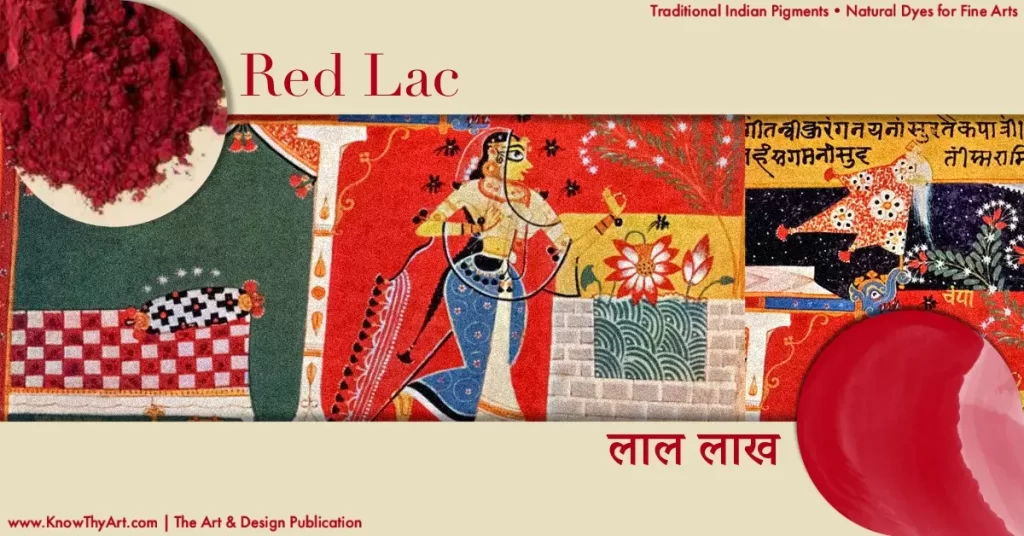
You didn’t think we’d make it almost to the end of this list without mentioning a pigment derived from insects, did you? The Lac bug or the Kerria Lacca is most commonly used for the commercial production of the red lac pigment in the Indian subcontinent. This insect is used to make shellac resin which is then converted into shards that are powdered into red lac paint.
Brown Clay/ Bura Mitti
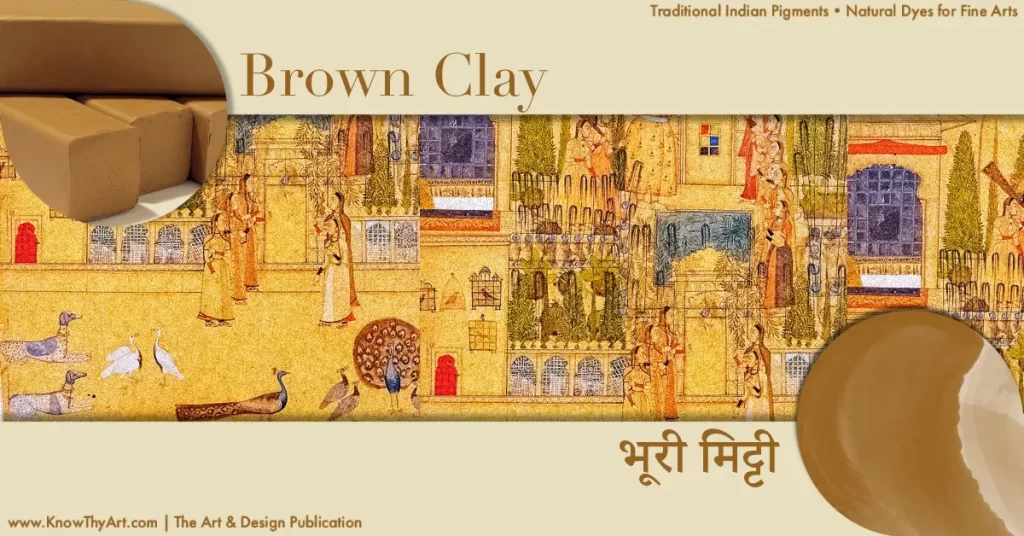
While a calcium carbonate base is used in modern productions of these paint pigments to give it opacity, in ancient caves, it was used for finger paintings or with reeds. A good quality brown clay paint pigment can last for decades without any sign of fading or chipping.
Artists still purchase these fine art paints from this list of natural Indian paint pigments for their paintings. Most of these pigments are now processed using modern techniques. In some form or another, these organic paint pigments are still used in many paints, dyes and artworks.






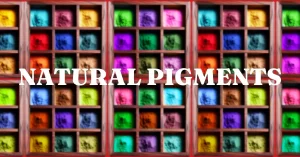
0 Comments